Pipefish
Family Syngnathidae (e.g., Corythoichthys, Doryrhamphus, Dunckerocampus)

Pipefishes are seahorse relatives stretched into elegant living needles. They swim horizontally using rapid dorsal fin flicks and micro-adjust with tiny pectorals, hunting by vacuuming copepods and shrimp with a lightning suction snap of their long tubular snout. Like seahorses, males carry the eggs—from sticky belly patches to fully formed pouches— while many species sport striking bars or dots that make them underwater candy canes.
🔬Classification
📏Physical Features
🌊Habitat Info
⚠️Safety & Conservation
Identification Guide
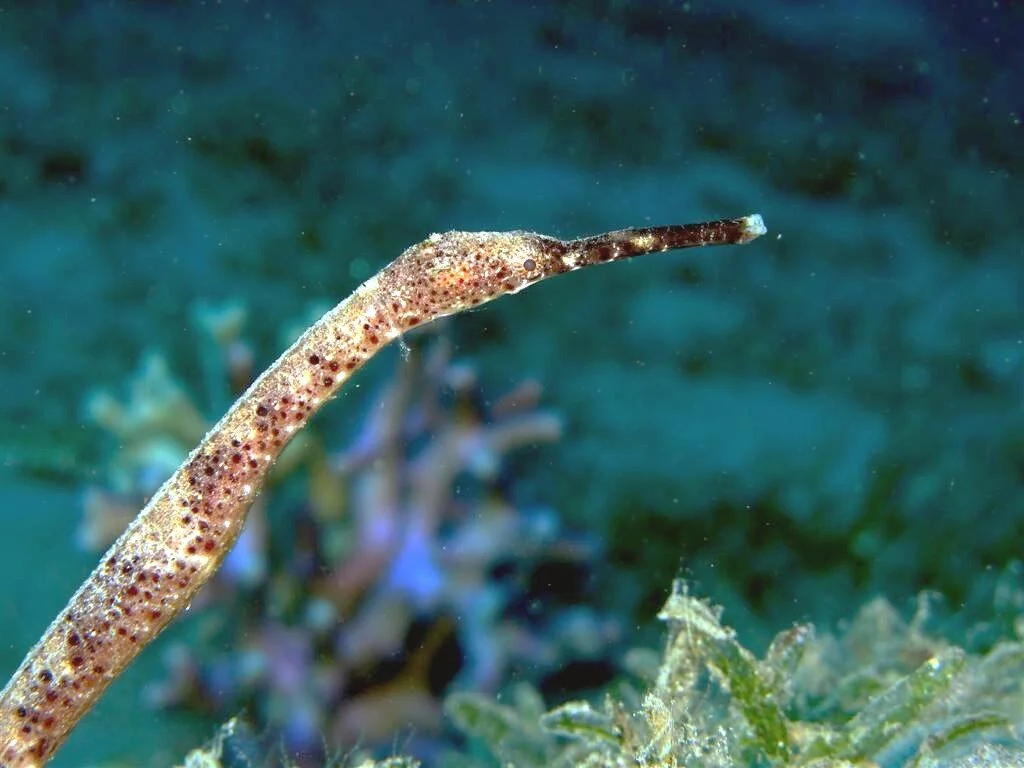
Field marks:
- Rod-straight, horizontal posture; elongated body of interlocking bony rings instead of scales.
- Long tubular snout with small, round mouth; feeding is a fast suction strike.
- Tiny dorsal fin propels; pectorals steer; tail usually non-prehensile (unlike seahorses).
- Males may show egg patch or brood pouch on the belly/tail region.
Differences from Similar Species
- Seahorse: upright with prehensile tail; male has sealed trunk pouch. Pipefish are horizontal, usually no gripping tail.
- Ghost pipefish: leafy outlines and female fin-pouch brooding; pipefish silhouettes are smooth, stick-like.
- Razorfish/Shrimpfish: vertical schooling with armor plates; pipefish are solitary/pairs and remain horizontal.
Juvenile vs. Adult
Juveniles are semi-transparent with softer patterns and often hide among fine algae; adults display bolder bars/dots, defined rings, and in males an obvious brooding area during the season.
Top 10 Fun Facts about Pipefish

1. Dad Designs Vary
Male pipefish brood styles range from sticky belly patches to sealed pouches—evolution’s A/B test in real time.
2. Straw-Snap Feeding
The snout is a precision straw; a rapid head flick creates suction that vacuums micro-prey.
3. Cleaner Cousins
Banded and blue-striped pipefish can run cleaning stations, picking parasites off “clients” like mini barbers.
4. Disagreement Eyes
The eyes can move semi-independently, tracking prey and threats without moving the body.
5. Armor, Not Speed
Interlocking bony rings trade sprinting power for resilience—great in surge-prone grass beds.
6. Tail Tales
Unlike seahorses, most pipefish don’t grip with the tail; they thread through algae like needles.
7. Social Settings
You’ll see pairs and small groups; some species form mixed cleaning crews with shrimp and juvenile wrasses.
8. Camouflage Couture
From sand-speckled mottle to candy-cane stripes, patterns match habitat lanes and coral edges.
9. Tiny Ranges, Big Fidelity
Individuals often stick to a few square meters—great news for repeat spotters and long-term ID.
10. Indicator Species
Healthy pipefish signal intact seagrass and mangrove nurseries—save the grass, save the needles.
Diving & Observation Notes
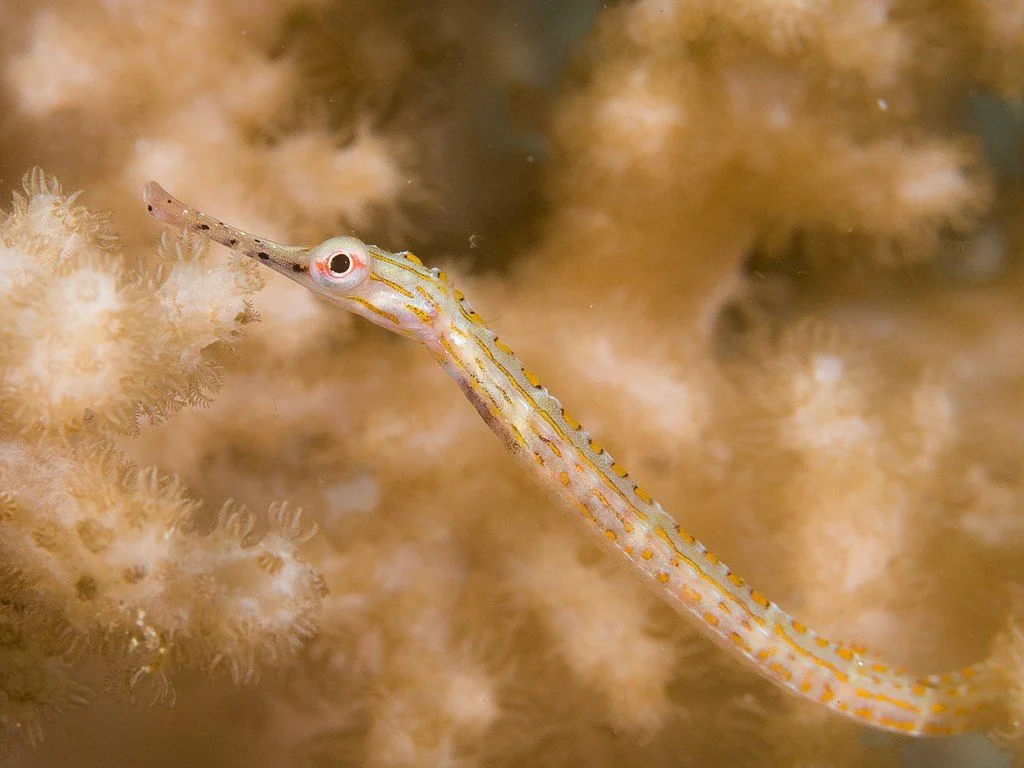
🧭 Where & How to Look
Glide slow and low along seagrass edges, rubble lanes, mangrove roots, pier pilings, and bushy hydroids/gorgonians. Scan for needle silhouettes crossing sand “runways” or striped cleaners hovering near larger fish.
🤝 Behavior to Watch
- Cleaning sessions: pause near groupers, parrotfish, or snappers—pipefish may pick at gills and fins.
- Brooding males: look for a darkened belly patch or pouch; observe briefly and give space.
- Pair patrols: two fish drifting in parallel, turning like synchronized needles.
📸 Photo Tips (Make It Pop)
- Tell the habitat story: include a blade of seagrass or a client fish in frame.
- Use gentle side/backlighting to reveal rings and stripes; avoid blasting reflective bars.
- Macro or CFWA: macro for head portraits and pouch detail; close-focus wide-angle to place them in the grass-scape.
🧮 Settings & Approach
- Use continuous AF to track subtle sway; moderate shutter (1/160–1/250) to freeze dorsal flicks.
- Approach from below and along their axis; avoid fin wash that collapses grass blades.
⚠️ Ethics & Safety
- No handling or repositioning—never “perch” individuals for photos.
- Limit flashes on brooding males; stress can cause egg loss.
- Maintain perfect neutral buoyancy over seagrass and rubble to prevent habitat damage.
🌏 Guide Nuggets
- Lembeh (Indonesia): Black sand lanes with hydroid bushes—great for candy-striped species.
- Anilao (Philippines): Jetty pilings and mixed algae beds; watch for cleaner pipefish on calm afternoons.
- Dauin (Philippines): Muck slopes with regular brooding males in season.
- Bali & Raja Ampat (Indonesia): Seagrass–reef interfaces rich in pairs and mixed cleaning stations.
Best Places to Dive with Pipefish
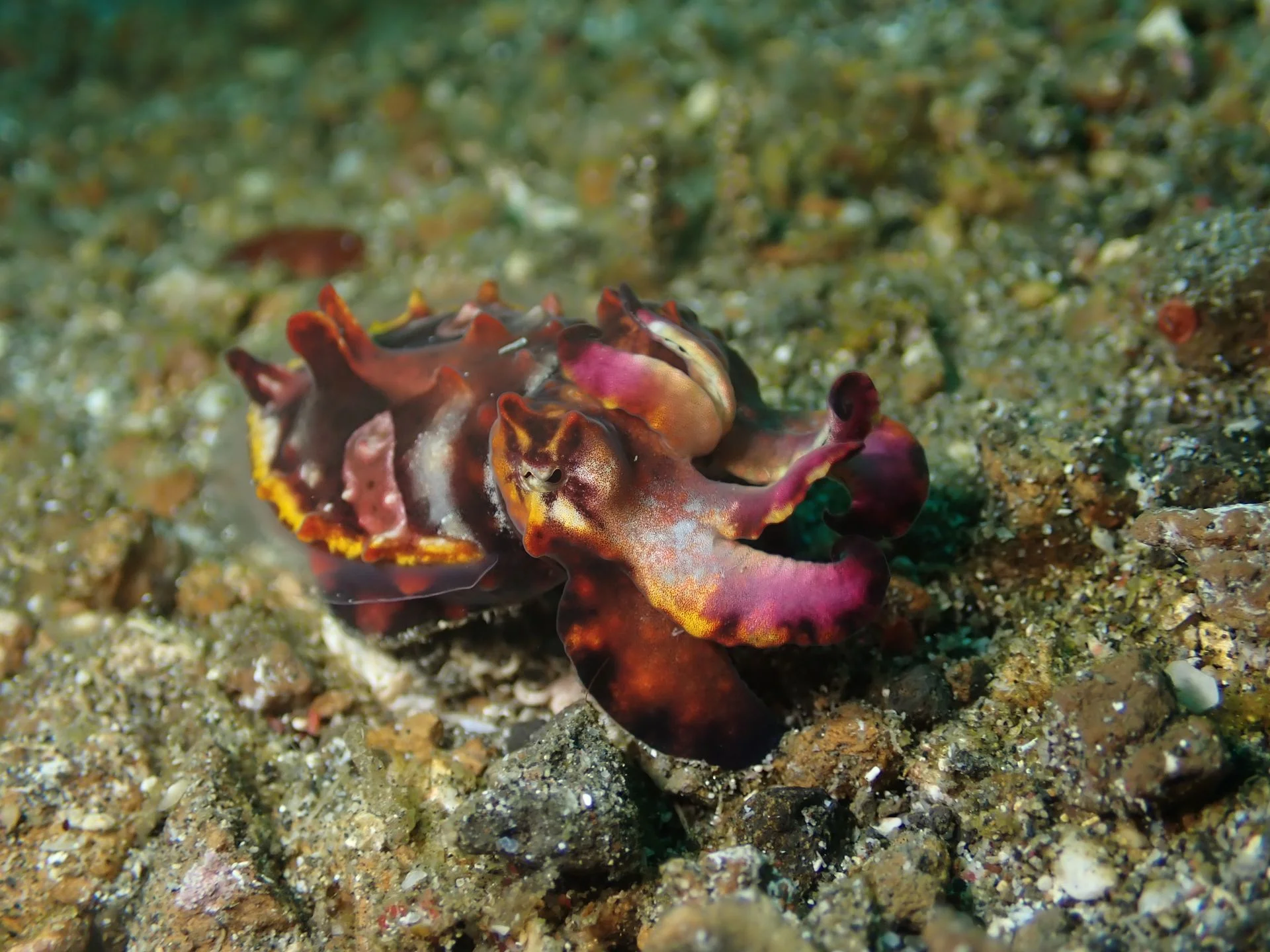
Lembeh
The Lembeh Strait in North Sulawesi has become famous as the muck‑diving capital of the world. At first glance its gently sloping seabed of black volcanic sand, rubble and discarded debris looks bleak. Look closer and it is teeming with weird and wonderful life: hairy and painted frogfish, flamboyant cuttlefish, mimic and blue‑ringed octopuses, ornate ghost pipefish, tiny seahorses, shrimp, crabs and a rainbow of nudibranchs. Most dives are shallow and calm with little current, making it an ideal playground for macro photographers. There are a few colourful reefs for a change of scenery, but Lembeh is all about searching the sand for critter treasures.
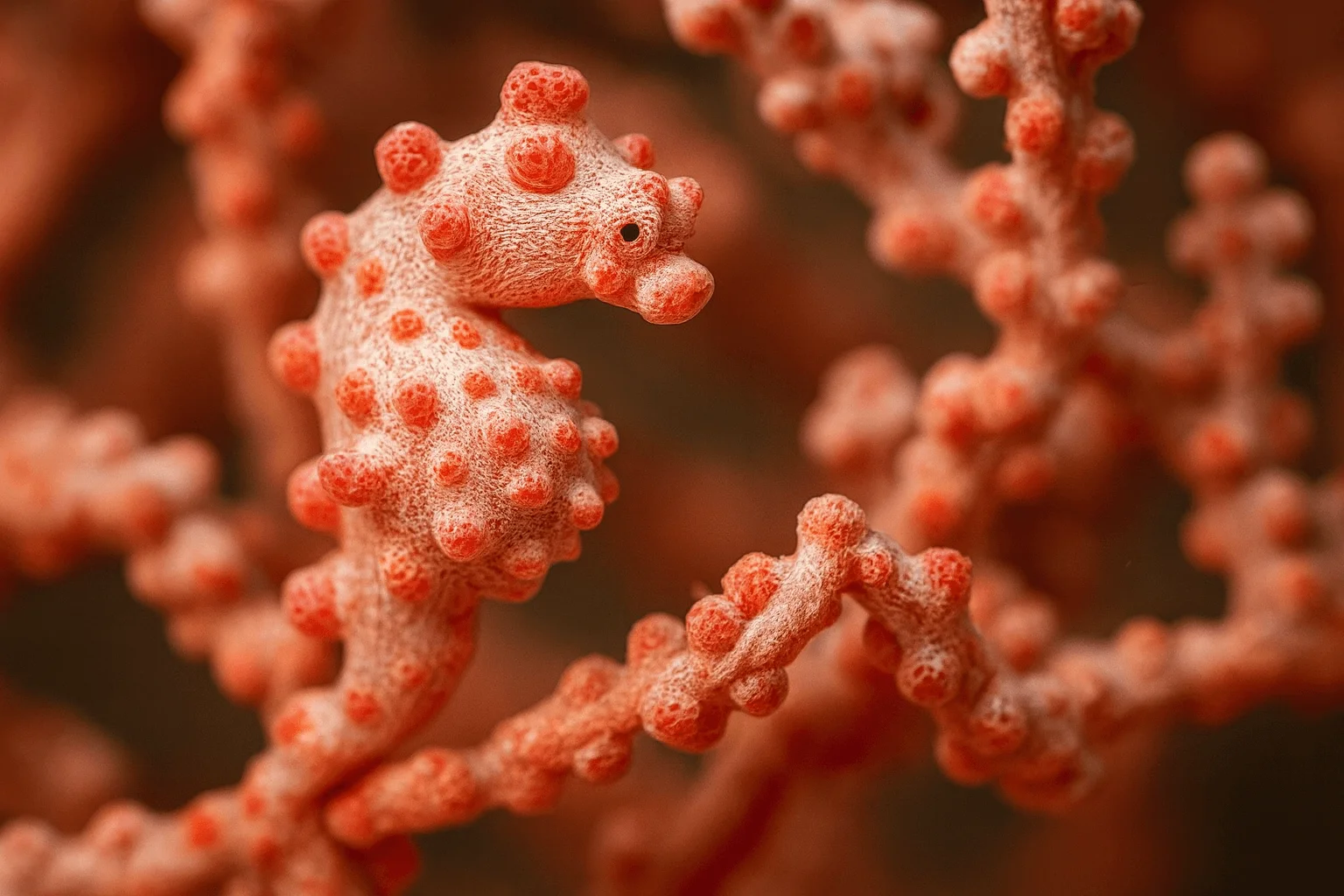
Anilao
Anilao, a small barangay in Batangas province just two hours south of Manila, is often called the macro capital of the Philippines. More than 50 dive sites fringe the coast and nearby islands, offering an intoxicating mix of coral‑covered pinnacles, muck slopes and blackwater encounters. Critter enthusiasts come for the legendary muck dives at Secret Bay and Anilao Pier, where mimic octopuses, blue‑ringed octopuses, wonderpus, seahorses, ghost pipefish, frogfish and dozens of nudibranch species lurk in the silt. Shallow reefs like Twin Rocks and Cathedral are covered in soft corals and teem with reef fish, while deeper sites such as Ligpo Island feature gorgonian‑covered walls and occasional drift. Because Anilao is so close to Manila and open year‑round, it’s the easiest place in the Philippines to squeeze in a quick diving getaway.
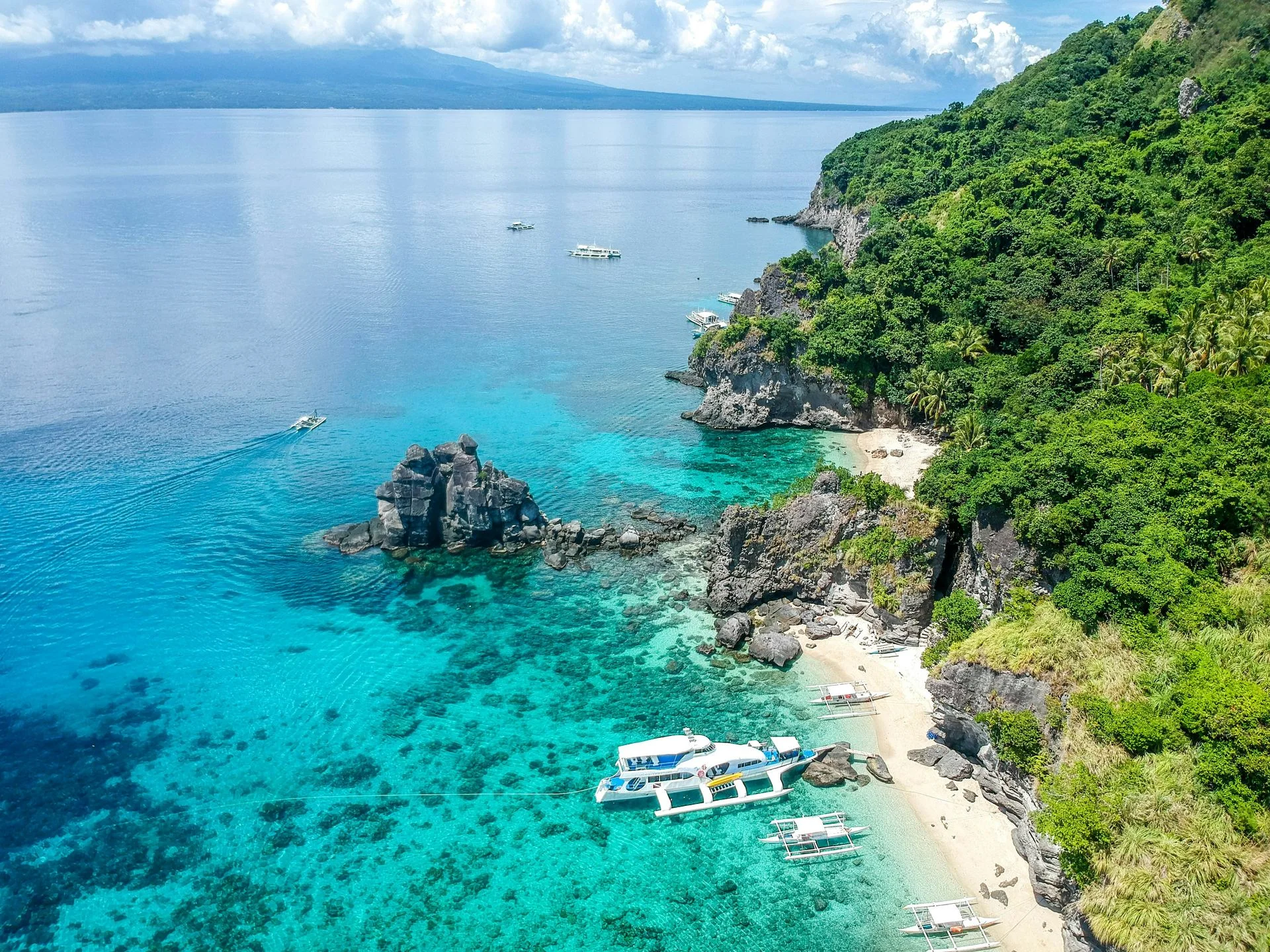
Dumaguete
Dumaguete on the southeast coast of Negros is the jumping‑off point for some of the Philippines’ most diverse diving. Along the nearby town of Dauin, a series of shallow marine sanctuaries and black‑sand slopes hide critters galore: frogfish, flamboyant cuttlefish, mimic octopus, ghost pipefish, seahorses, pipefish and nudibranchs. Artificial reefs made from car tyres and pyramids provide extra habitat. Offshore, Apo Island’s walls and plateaus burst with hard and soft corals, schooling jacks and barracudas, and friendly green turtles. With day trips to Oslob’s whale sharks or Bais’ dolphin‑watching, and excursions to nearby Siquijor, Dumaguete offers a perfect mix of macro muck diving and classic coral reefs.
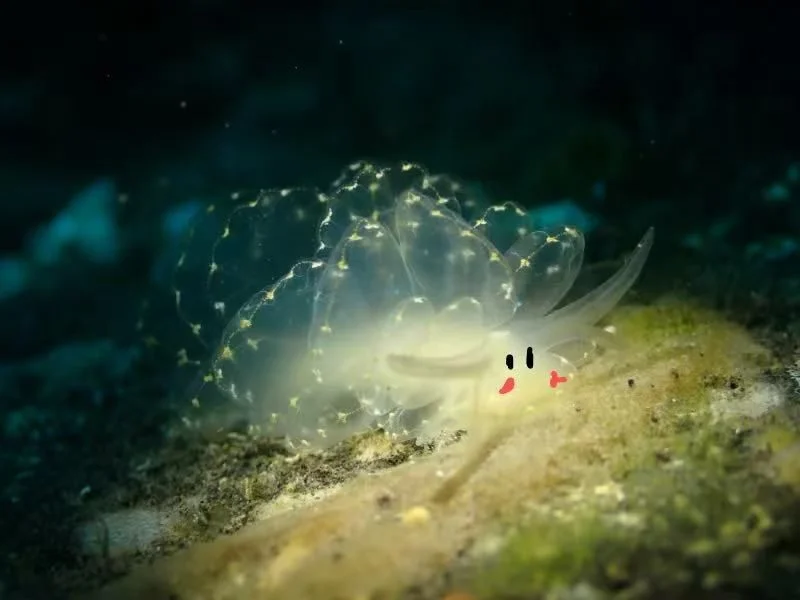
Tulamben(Bali)
Tulamben sits on Bali’s northeast coast and is best known for the USAT Liberty shipwreck – a 125‑metre cargo ship torpedoed in WWII that now lies just a short swim from shore. Warm water, mild currents and straightforward shore entries make diving here relaxed for all levels. Besides the wreck, divers can explore coral gardens, black‑sand muck sites and dramatic drop‑offs. Macro lovers will find nudibranchs, ghost pipefish, mimic octopus and pygmy seahorses, while big‑fish fans can encounter schooling jackfish, bumphead parrotfish and reef sharks. With a compact coastline packed with variety, Tulamben delivers world‑class wreck and critter diving without long boat rides.

Raja Ampat
Raja Ampat, the “Four Kings,” is an archipelago of more than 1,500 islands at the edge of Indonesian West Papua. Its reefs sit in the heart of the Coral Triangle, where Pacific currents funnel nutrients into shallow seas and feed the world’s richest marine biodiversity. Diving here means gliding over colourful walls and coral gardens buzzing with more than 550 species of hard and soft corals and an estimated 1,500 fish species. You’ll meet blacktip and whitetip reef sharks on almost every dive, witness giant trevally and dogtooth tuna hunting schools of fusiliers, and encounter wobbegong “carpet” sharks, turtles, manta rays and dolphins. From cape pinnacles swarming with life to calm bays rich in macro critters, Raja Ampat offers endless variety. Above water, karst limestone islands and emerald lagoons provide spectacular scenery between dives.